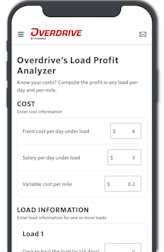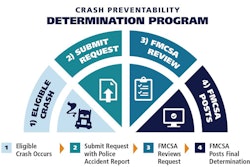Owner-operators who remember the hours of service rules from the time before the Federal Motor Carrier Safety Administration introduced the 14-hour on-duty maximum (with 11 maximum hours of drive time) in the early part of this century often pine for the old days, when splitting the required off-duty period was allowed -- and quite liberally so. In fact, most owner-operators working in trucking today still view that sort of approach as the best option for safety.
Responding to polling in late 2024/early 2025, nearly 9 in every 10 Overdrive readers felt maximum split flexibility would be the best split-sleeper option in the hours rules for professional truckers to get better rest.
While there have been somewhat limited fleet-specific exemptions allowing certain team-driver operations to do that -- in McKee Foods' case dating back now to 2015 -- a broader change in the general rule just hasn't been in the cards in recent years. Yet FMCSA's revisions to the hours of service rule in 2020 did contain a significant change to the split-sleeper provisions of the rules. Before September 29, 2020, when the new rule went into effect, the rule only allowed drivers to split the daily required 10-hour off-duty break into 8- and 2-hour periods, as long as the eight-hour period was spent fully on the sleeper berth log line.

The new rule changed some of that. It responded to owner-operators' long calls for additional sleeper-split flexibilities by allowing for 7- and 3-hour periods to satisfy the requirement for 10 hours of daily off-duty rest, with an additional change: the shorter of the two periods no longer counts against the 14-hour daily on-duty window. In other words, as long as the shorter period of the split is at least two hours, you can use it to “stop the clock” for a mid-day nap or other off-duty break.
View the video at the top for more quick detail on how it works, or read the story at this link, published like the video around the time of the change, that drew out a hypothetical scenario with logbook examples to show ways owners might use the new provisions.
[Related: Rolling the 14: How to pull of the split sleeper under the hours of service]
It's important to understand what's allowable under the current hours of service rules to stay in the good graces of inspectors, of course, but the split sleeper options can also be an effective time- and safety-management tool, particularly when a three-hour nap on the way toward a busy metro area, nearing rush hour, will net two positive gains.
- Needed rest for a long run into the evening, without losing those hours from your on-duty day.
- Avoiding the transit-time delays that come with big traffic jams around said metro area.
Study up on the rules with the video and examples to learn how to get rest during the workday, and stop the clock to avoid penalizing yourself on time available to drive.
Read next: What's appropriate as 'personal conveyance' in the logbook or ELD under the hours rules?
Back to the Safety and Compliance contents page








